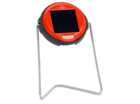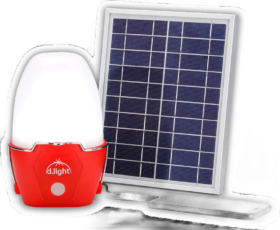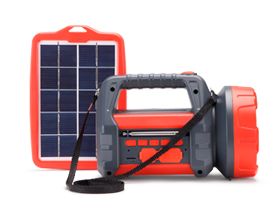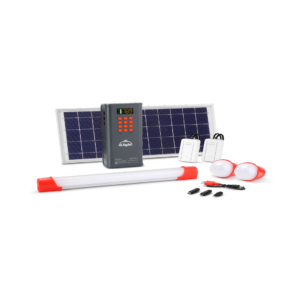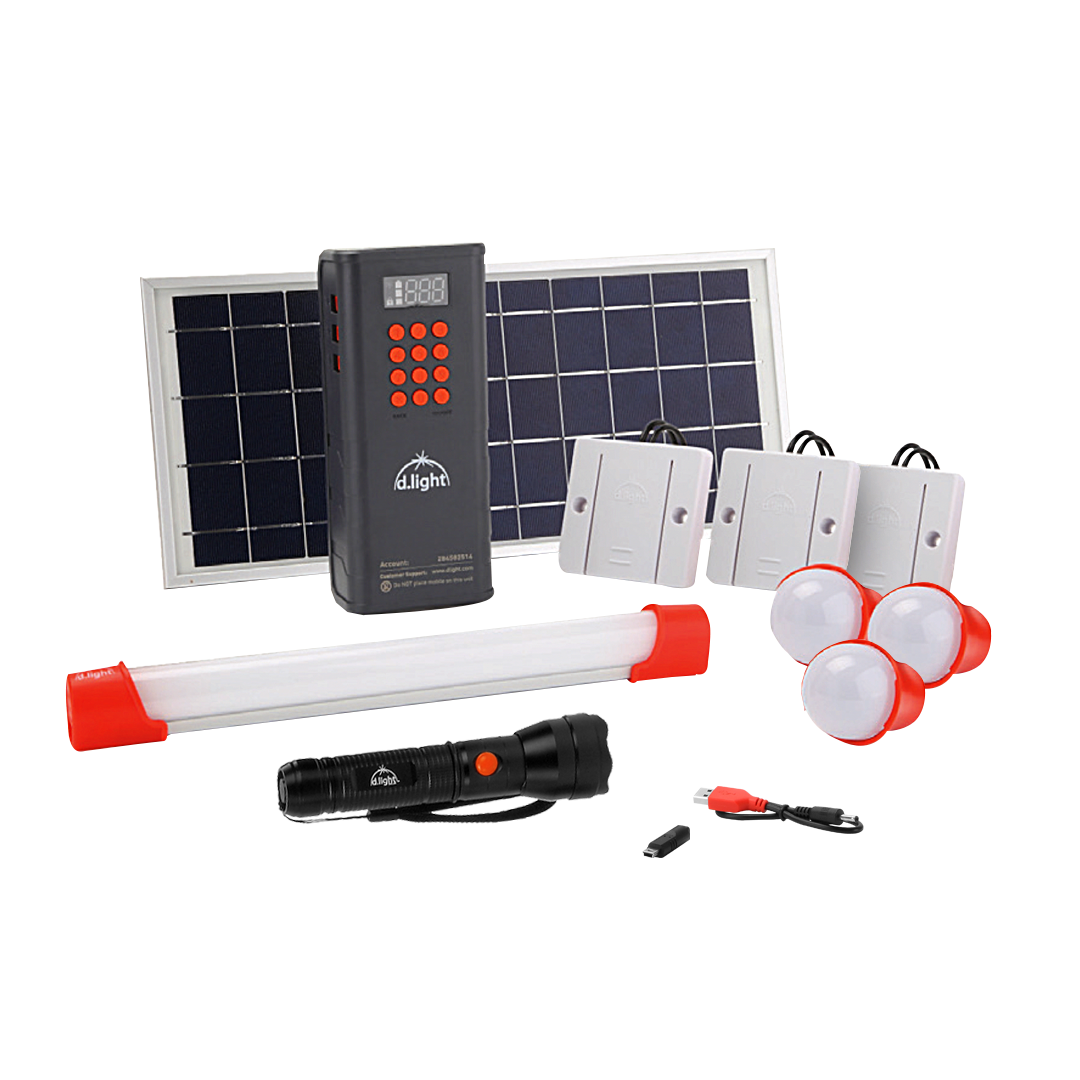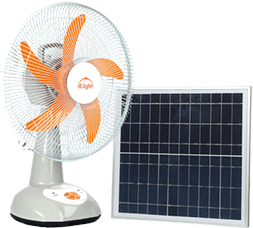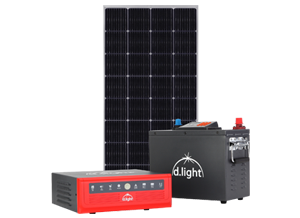A story of how access to solar energy improves quality of life for one family.

Almost immediately, her daily income doubled. She went from making up to US$5 a day, to as much as $10 daily. Ecstatic at the product’s performance and her increased sales, Agnes recommended the product to the other twenty-nine women in her savings group. Within a month, every single one of them had purchased an S20.
Four months later, Agnes upgraded to the d.light S300, which provides even brighter light in addition to mobile phone charging. Now, she was selling chips and charging her neighbors’ phones, allowing her income to increase another 50 percent, to $15 per day.
As d.light’s product line expanded, so did Wanjiru’s aspirations. Early this year she purchased a new D30 solar home system, which provides enough power to light up her entire home—and gives her the chance to increase her income even further. She is now able to charge more phones and attract more customers to her chips stall.
In only eighteen months, Agnes has moved from using a kerosene lantern to having a reliable, expansive energy source for her home and business. She has more than tripled her daily income, is saving more than $70 per year on kerosene, and is no longer living with the risk of respiratory infections or fire from kerosene lanterns.
In a short amount of time, Agnes has advanced high up what we call the Energy Access Ladder. When she learned about d.light, she was at the bottom of the ladder, with the 250 million other people worldwide who rely on kerosene for light. Today, she uses the latest solar and battery technology available to power multiple devices every day.
For many like Agnes who do not have access to grid electricity, the formula for improving quality of life is simple: The more access to energy they have, the greater their economic opportunities. As their income increases, so do their energy access options—to the point that families in the developing world have the opportunity to use all the appliances they need.
Studies have shown that, for off-grid families, just a small improvement in energy access drastically affects their well-being. An individual’s Human Development Index score, which takes into account life expectancy, education, and income, can double or even triple with increased energy consumption of a few hundred kilowatts per year. Wanjiru’s story demonstrates this.
Since 2009, d.light has been focused on raising the 2.3 billion people in the developing world living without reliable electricity up the Energy Access Ladder in a sustainable, environmentally friendly way. Our partners in this quest include Lighting Global, Power Africa, the UN Foundation, Power for All, and the Global Off-Grid Lighting Association.
Now, nearly nine years later, more than 62 million people have switched to d.light’s solar products. Our diverse range of products allow families to choose the one that best meets their needs. Our hope is that, as they save money from moving away from kerosene and increase their income, they can upgrade to products that offer more functionality, greater power capacity, and increase their quality of life.
Another d.light customer in Kenya, fish seller John Otieno of Nakuru, has seen his sales increase since purchasing a solar lantern:
“The kerosene lantern used to make my fish smell like kerosene and the clients were not able to see the fish well when it was getting dark and this was bad for my business. Now my stock of fish stay fresh and my clients can identify me from far by the bright light of the S20 lantern.”
On average, d.light customers have saved an average of $310 per year by shifting from kerosene to solar. Thatmakes more resources available for food, school fees, healthcare, and other necessities. They gain 16 percent more hours of light in their homes and businesses. They’ve also eliminated 3.78 million tons of CO2 emissions and are free from the negative health effects of burning kerosene.

Studies have shown that, for off-grid families, just a small improvement in energy access drastically affects their well-being. An individual’s Human Development Index score, which takes into account life expectancy, education, and income, can double or even triple with increased energy consumption of a few hundred kilowatts per year. Wanjiru’s story demonstrates this.
Since 2009, d.light has been focused on raising the 2.3 billion people in the developing world living without reliable electricity up the Energy Access Ladder in a sustainable, environmentally friendly way. Our partners in this quest include Lighting Global, Power Africa, the UN Foundation, Power for All, and the Global Off-Grid Lighting Association.
Now, nearly nine years later, more than 62 million people have switched to d.light’s solar products. Our diverse range of products allow families to choose the one that best meets their needs. Our hope is that, as they save money from moving away from kerosene and increase their income, they can upgrade to products that offer more functionality, greater power capacity, and increase their quality of life.


